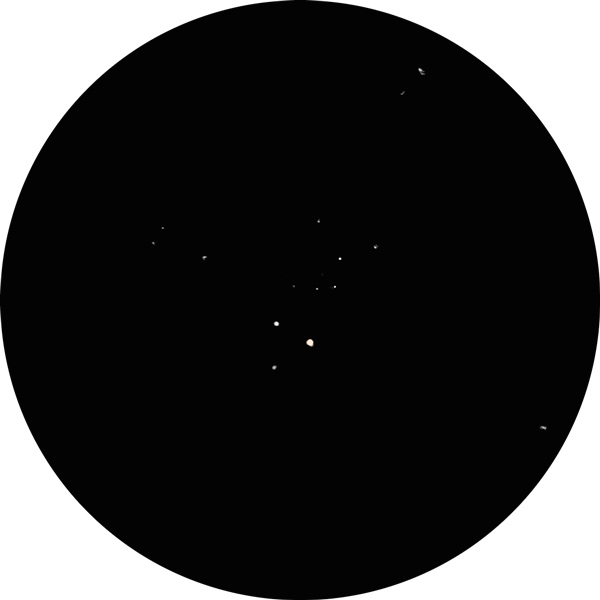NGC 7160 is an open star cluster in the constellation Cepheus best viewed on autumn nights.
The smaller and younger-aged open cluster of NGC 7160 has a magnitude of 6, so it’s bright enough to find with binoculars, but a telescope will deliver a better view due to its small size. Astronomers estimate 16 stars make up the central region, with another 71 stars spread out within the total radius. 1
Some brighter stars make a prominent triangle near the center. On a fun note, amateur astronomer Richard Orr points out that the triangle resembles the eyes and nostrils of an alligator. Several other stars stream behind the triangle, making it look like an alligator swimming in a swamp. I agree with Mr. Orr’s thoughts on this—this cluster either looks like an alligator swimming or a kite with a streamer attached!
The Great Cygnus Rift, a large dark interstellar cloud made up of dust grains, sits like a filter between us and NGC 7160. Without the rift, the cluster would be considerably brighter to our eyes. Also, the cluster lies within a bubble of molecular gas called the Cepheus Bubble. Stellar winds from a supernova most likely created the bubble. What’s more, the stars Lambda Cephei and 68 Cygni might have flown away from this area.2 See my entry on Iota Orionis, another runaway star.
Historically speaking, William Herschel discovered NGC 7160 on November 9, 1789. Years later, on October 7, 1829, John Herschel observed the cluster.
My Observations
| Date | October 28, 2022 |
| Time | 9:42 p.m. |
| Location | Seattle, WA |
| Magnification | 169x |
| Scope | Meade 8″ SCT |
| Eyepiece | 12mm |
| Seeing | Average |
| Transparency | Below Average |

A bright triangle pattern appears near the center of this cluster, with a series of dimmer stars trailing off the base. The stars trailing off look like a streamer connected to a kite. Or, as one observer noted, this pattern looks like an alligator (the base of the triangle being the eyes) swimming in a black swamp. I want to revisit this cluster from a dark site location, as I’m sure it would be exciting to see more of the dimmer stars.
Key Stats
| Constellation | Cepheus |
| Best Viewing | Autumn |
| Visual Magnitude | +6.1 |
| Distance from Earth | 2600 ly |
| Milky Way Location | Orion Spur |
| My Viewing Grade | B |
Sources and Notes
Banner graphic by Roberto Mura. The file is licensed under the Creative Commons Attribution-Share Alike 3.0 Unported license.
1 Herschel 383NGC 7160, http://www.phys.ttu.edu/~ozprof/h383.htm.
2 “NGC 7160.” Wikipedia, Wikimedia Foundation, 23 Apr. 2021, https://en.wikipedia.org/wiki/NGC_7160.
AKA: NGC 7160, Herschel 383
